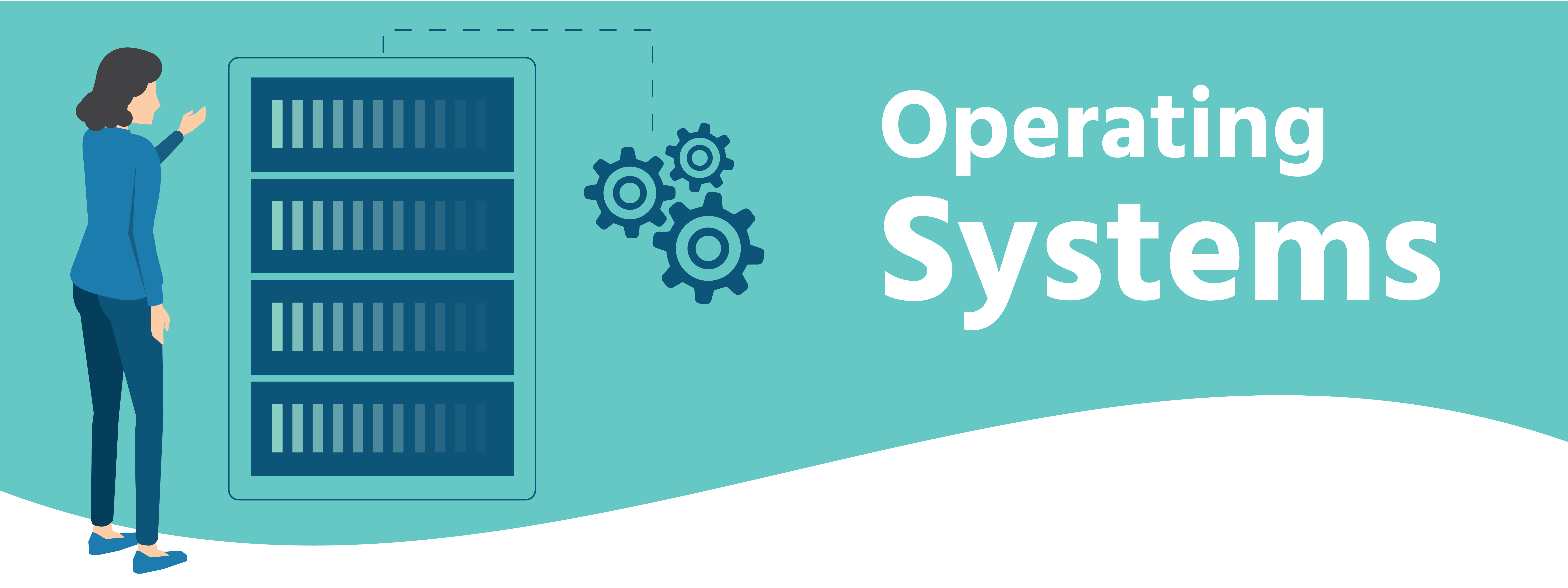2.1 Operating Systems
An operating system is software that runs on a computing device and manages the hardware and software components that make up a functional computing system.

Modern operating systems don’t just manage hardware and software resources, they schedule programs to run in a multi-tasking manner (sharing the processor so that multiple tasks can occur apparently simultaneously), provide standard services that allow users and programs to request something happen (for example a print job) from the operating system, and provided it’s properly requested, the operating system will accept the request and perform the function needed.
Desktop and server operating systems are by nature more complex than an operating system that runs on a single-purpose device such as a firewall, or a mobile phone. From a simple set-top box that provides a menu interface for a cable provider, to supercomputers and massive, parallel computing clusters, the generic term operating system is used to describe whatever software is booted and run on that device.
Computer users today have a choice mainly between three major operating systems: Microsoft Windows, Apple macOS, and Linux.
Of the three major operating systems listed only Microsoft Windows is unique in its underlying code. Apple’s macOS is a fully-qualified UNIX distribution based on BSD Unix (an operating system distributed until 1995), complemented by a large amount of proprietary code. It runs on hardware specifically optimized to work with Apple software. Linux can be any one of hundreds of distribution packages designed or optimized for whatever task is required. Only Microsoft Windows is based on a proprietary code base that isn’t either UNIX- or Linux-based.
A user can easily interact with any of these systems by pointing and clicking their way through everyday productivity tasks that all behave similarly regardless of the underlying operating system. Except for Windows, which is mostly administered via the GUI, most system administration tasks are performed using typed commands in a terminal. An administrator that is familiar with UNIX can typically perform tasks on a Linux system and vice versa. Many Linux command line functions also have Microsoft equivalents that administrators use to do their work efficiently.